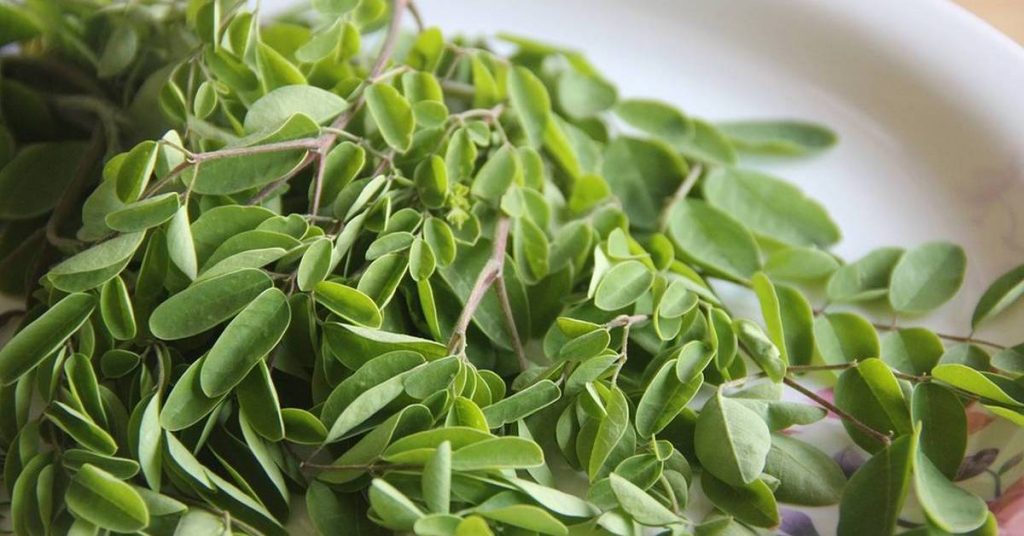Moringa oleifera leaves are small, thick, and extremely nutritious leaves, that contain a rich combination of nutrients, including vitamins, minerals, powerful antioxidants, and complete protein.
The bulk of the nutrition is found in the young leaves. The older the leaves are – the less nutrition they contain. That is way moringa leaves are harvested early when moringa trees are still saplings. They are plucked from freshly cut branches.
After being cleaned of impurities, the moringa leaves are dried at low temperature for better vital nutrients preservation. Then they are chopped into deep green powder.

The moringa leaf powder could be encapsulated, or bagged as a loose powder.
Another way for using moringa leaves is as a tea, either alone or in a combination with the other teas.
The leaves are rich in proteins, 100 g of fresh leaves has 2 times more proteins than 100g of yogurt, 4 times the calcium of 100 g of milk, , the same amount of potassium as 100 g of banana, the same amount of vitamin A as 100 g of carrot, 3 times the vitamin C of 100 g of orange. However, like most plants, heating moringa above 140 F will destroy some of the nutritional value.
Fresh leaves could be prepared like spinach, cooked (see recipe at howtoAtoZ.net) or in a salad, as a spinach substitute. Dry leaves powder is commonly used in a soups and sauces.
One of many moringa lives properties is to treat abdominal bloating. In this case a person should drink some moringa tea. Mix 1 tablespoon powdered moringa with 50 ml of boiling water, let it stay for 1 hour or longer, then strain and drink like any other tea.
Eating leaves is believed to increase women’s milk productions and is sometimes prescribed for anemia.
Juice from the leaves is believed to have a stabilizing effect on the blood pressure, and to control glucose levels in cases of diabetes.
